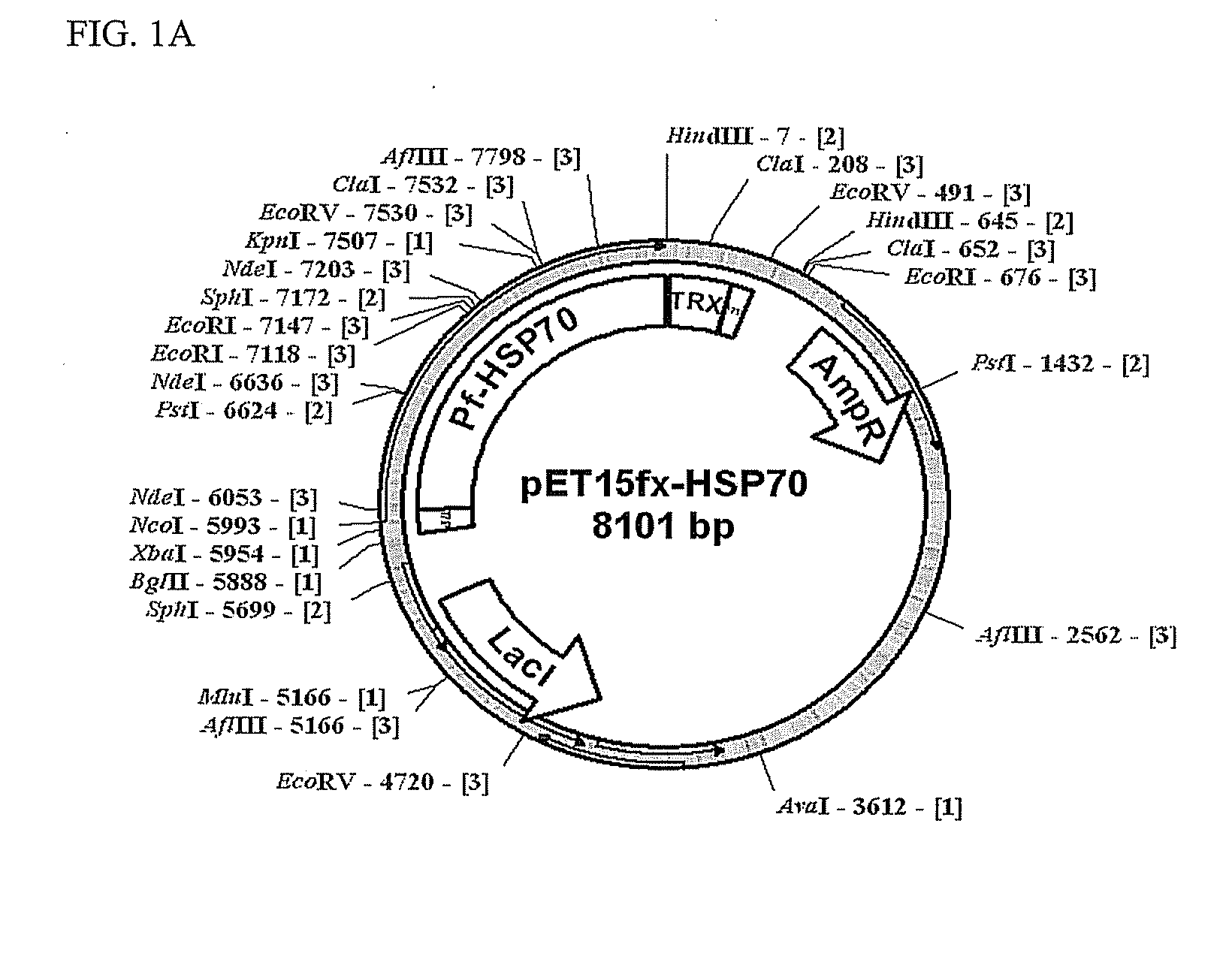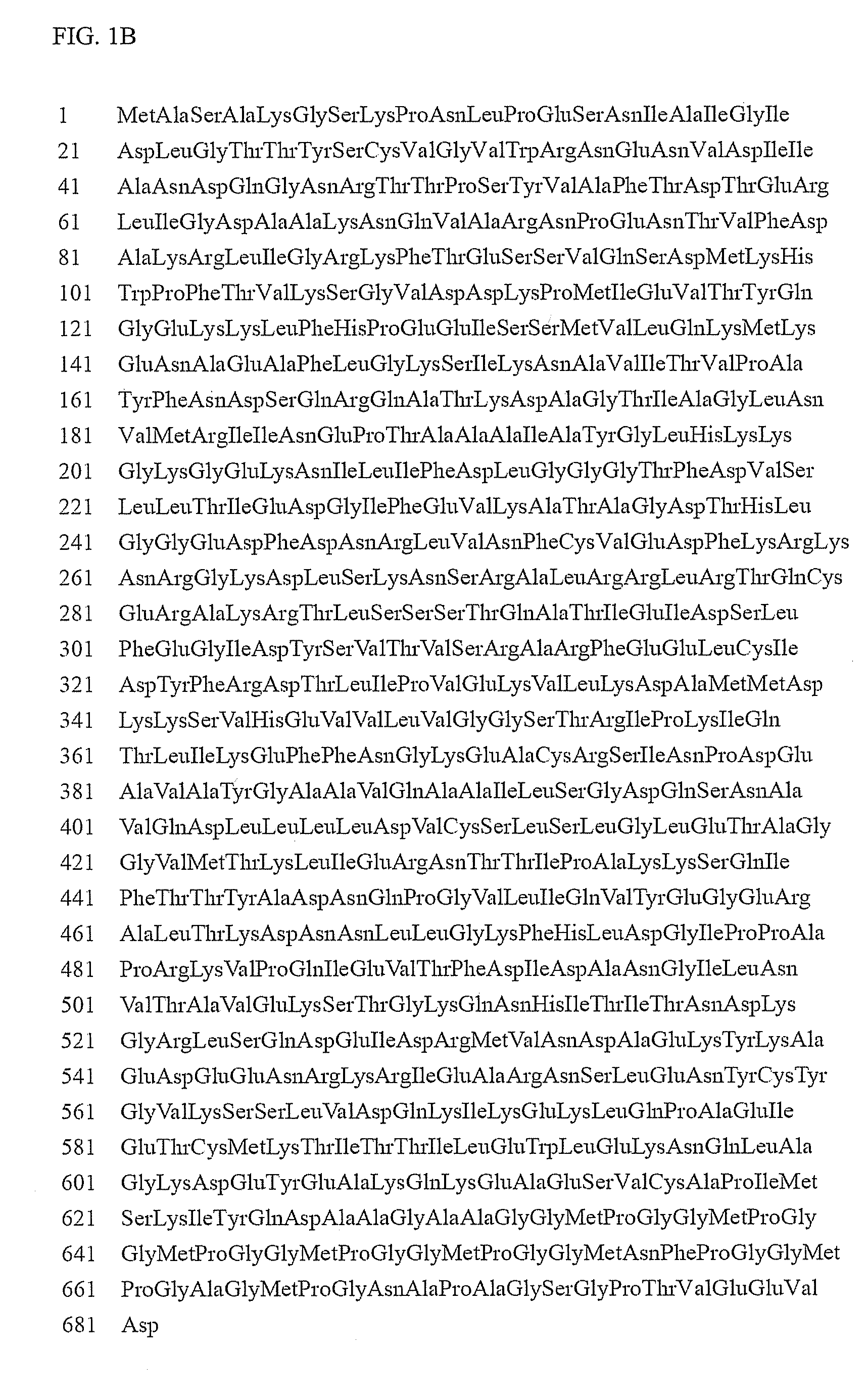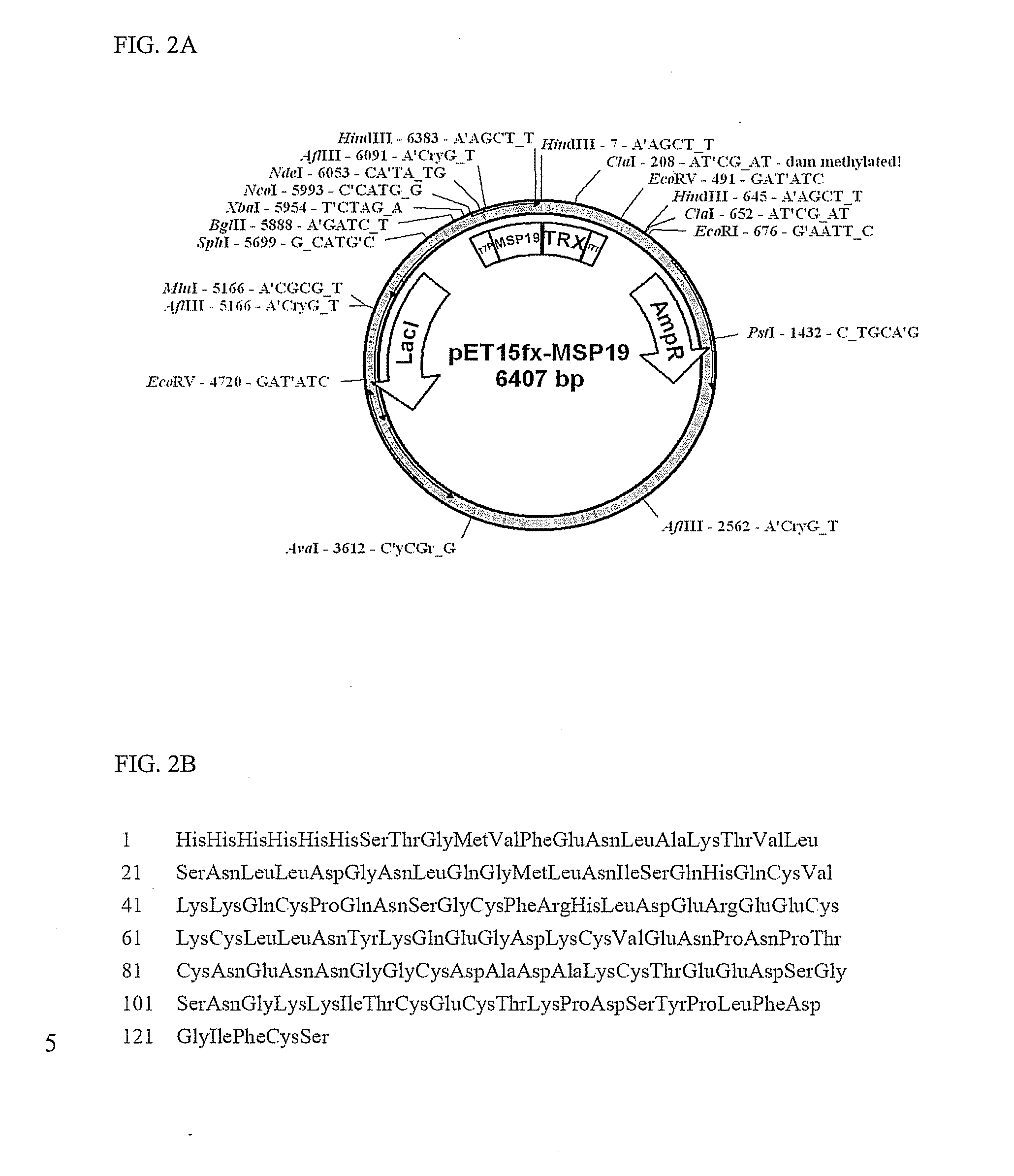Immunoassay for plasmodium falciparum and assay device used therefor
a technology of which is applied in the field of immunoassay and diagnostic reagent for plasmodium falciparum and assay device, can solve the problems of low sensitivity, development of diagnostic reagents with high sensitivity and specificity, and the death of considerable numbers of malaria-infected patients, and achieve the effect of confirming the presence of antigens or antibodies
- Summary
- Abstract
- Description
- Claims
- Application Information
AI Technical Summary
Benefits of technology
Problems solved by technology
Method used
Image
Examples
example 1
Construction and Expression of Recombinant Malaria Antigens
[0036]In order to isolate RNAs from Plasmodium falciparum positive blood, a TRI Reagent™ (Sigma, Cat. No. T9424) was used. Isolation was carried out as follows, according to the instructions of a reagent manufacturer.
[0037]0.1 ml of malaria positive blood was mixed and reacted with 0.1 ml of TRI Reagent™ (Sigma, Cat. No. T9424) at room temperature for 5 min. The resulting solution was mixed and reacted with 20 ml of BCP (1-bromo-3-chloropropane) at room temperature for 5 min and then centrifuged at a temperature of 4° C. and 12,000 rpm for 15 min. Among 3 layers formed after centrifugation, the upper layer containing RNAs was transferred to a fresh tube and 50 μl of isopropanol was added thereto, and incubated at room temperature for 5 min. The resulting solution was centrifuged at a temperature of 4° C. and 12,000 rpm for 10 min and the supernatant was discarded. Precipitates were washed with 75% ethanol and dissolved in 20...
example 2
Purification of Malaria Antigens Expressed in E. coli Transformants
[0043]E. coli transformants constructed in example 1 were cultured in an LB medium to which antibiotics ampicillin (100 μg / ml) and chloramphenicol (50 μg / ml) were added for 12 hours. 50 ml of the culture was inoculated again onto 1 L of the LB medium and incubated at a temperature of 37° C. for 2 hours. Cells were grown to an optical density at 600 nm (OD600) of 0.3 and then, incubated to for additional 7 hours by addition of IPTG (isopropyl β-D-thiogalactopyranoside) to a final concentration of 0.2 mM. The culture was centrifuged to separate the cells and the separated cells were suspended in 30 ml of phosphate buffer, homogenized using a Sonicator (Sonifier 450, Branson) and centrifuged at 12,000 rpm for 30 min. Since some portion of HSP 70 protein expressed in E. coli transformants was present in the supernatant, while the remainder was present in centrifuged precipitates, the supernatant and precipitates were sep...
example 3
Production and Purification of Anti-HRP II Antibodies
[0045]A mixed solution of HRP II antigen purified in example 2 and an immune adjuvant (Sigma, Complete Freund Adjuvant) was administered to rabbits, 3 times at 3-week intervals by intramuscular injection, and blood was collected from rabbits and centrifuged to obtain sera. 45% ammonium sulfate was added to the sera to cause precipitation of antibodies which was then centrifuged at 12,000 rpm for 40 min. The precipitates were dissolved with phosphate buffer and purified by Protein G column chromatography.
PUM
 Login to View More
Login to View More Abstract
Description
Claims
Application Information
 Login to View More
Login to View More - R&D Engineer
- R&D Manager
- IP Professional
- Industry Leading Data Capabilities
- Powerful AI technology
- Patent DNA Extraction
Browse by: Latest US Patents, China's latest patents, Technical Efficacy Thesaurus, Application Domain, Technology Topic, Popular Technical Reports.
© 2024 PatSnap. All rights reserved.Legal|Privacy policy|Modern Slavery Act Transparency Statement|Sitemap|About US| Contact US: help@patsnap.com










